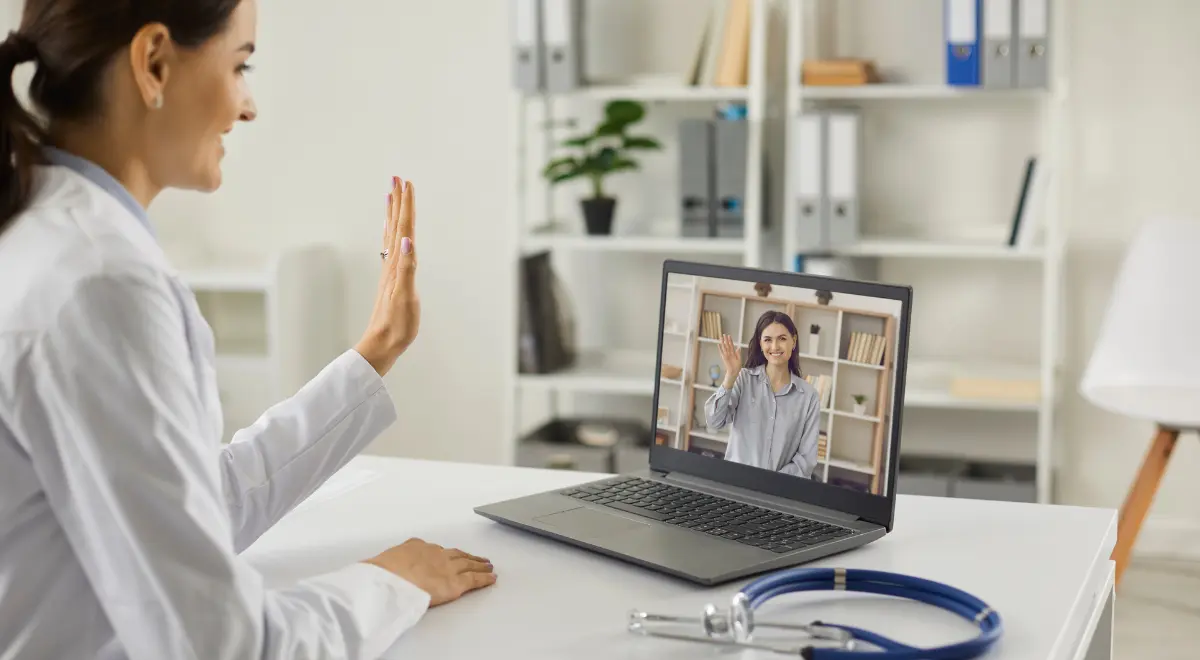Transitional Care Management with RPM and CCM

Remote Patient Monitoring (RPM) complements Chronic Care Management (CCM) and collaboratively drives a wide range of care management programs. Transitional Care Management (TCM) is one among them and aims at treating specific complex illnesses and ensuring better patient health as part of post-discharge care.
Transitional Care Management (TCM) is a healthcare delivery solution focusing on the first 30 days post-discharge, ensuring patients receive continuity of care as they transition from one care setting to another, such as from a hospital to a home or other nursing facility. It comprises a coordinating care plan for the patient and provides education and support to the caregivers with Remote Patient Monitoring (RPM) and follow-up visits. TCM aims to reduce the risk of health problems, and re-admissions, and prevent recurring hospital visits.
Table of Contents
ToggleTransitional Care Management (TCM) In Conjunction To Chronic Care Management (CCM)
CPT 99495 for moderately complex patients and CPT 99496 for higher complexity patients are a part of TCM and are used in collaboration with CPT 99490 for CCM to enhance patient outcomes.
Physicians should enroll their patients in the CCM and bill them for CPT 99490 in a given month. When the coordinator reaches out to the patient within 2 days of discharge and the patient arrives for the face-to-face visit, bill TCM 99496. If the patient is unable to come for the face-to-face visit, the time spent for attempted TCM billing will count as CCM time. TCM’s scope of service includes:
- Interactive Contact: Via phone call or email communication with the care coordinator.
- Non-Face-To-Face Service: Assess, identify, assist, and communicate with the care coordinator as part of the CCM scope.
- Face-To-Face Visit: This requires the patient to come into the physician’s office.
Any new Medicare patient meeting the CCM criteria and visiting the physician’s office for TCM can be signed up for CCM.
Remote Patient Monitoring (RPM’s) Role In Transitional Care Management (TCM)
TCM lasts for 30 days and starts the day a patient is discharged from the hospital. This medical billing program is intended to reimburse practitioners for treating patients with complicated medical conditions, to reduce patient readmissions and ensure complete recovery.
RPM can be used and billed in conjunction with the TCM. This includes using RPM to track a patient’s vital signs and other crucial data that clinicians may utilize to monitor their care, as well as remote communication to discuss and review the patient’s status.
Brief Overview of TCM Codes
1. CPT 99495 for Transitional Care Management Services requires:
- Communication (direct, telephone, electronic) within 2 business days of discharge
- Medical follow-up of moderate complexity during the service period
- Face-to-face visit, within 14 calendar days of the patient’s discharge from the hospital
2. CPT 99496 for Transitional Care Management Services requires:
- Communication (direct, telephone, electronic) within 2 business days of discharge
- Medical decision-making of high-level complexity during the service period
- Face-to-face visit, within 7 calendar days of the patient’s discharge from the hospital
About Billing TCM Services
1. TCM Can Be Billed Simultaneously With Other Medicare Programs
All eligible billing providers can bill for TCM codes in conjunction with the Chronic Care Management (CCM) and Remote Patient Monitoring (RPM) programs, which are specifically two separate value-based care models used for chronically ill patients.
CCM reimburses patients with two or more chronic illnesses for managing and coordinating care in between traditional office visits.
RPM reimburses physicians and authorized NPPs for using remote equipment to gather patients’ vital signs, as well as for one-time setup and ongoing consultations.
Medicare considers the dual reimbursement for one patient as necessary and reasonable. There are some CPT codes, including home health and hospice plan oversight, medication management, team meetings, and others that may not be reimbursable within the same 30-day period by the same provider that billed for CCM and TCM services.
2. TCM Billing Aspects To Remember
- Only one physician or NPP can report TCM services.
- Report services once per patient during the TCM period.
- The same healthcare provider can discharge the patient from the hospital, record hospital or observation discharge services, and bill TCM.
- The obligatory face-to-face visit cannot occur on the same day as reporting discharge day management services.
- Provide reasonable and necessary E/M services (excluding face-to-face visits) to address the patient’s clinical difficulties separately.
- TCM treatments cannot be billed throughout the post-operative global surgical period.
- Include the following information in the patient’s medical record:
– Patient discharge date
– First interaction with caregiver or patient
– Face-to-face visit date
– Medical decision-making
3. Bill for TCM Service Period In The Same Month As CCM (99490)
If the TCM service period ends before the given calendar month, at least 20 minutes of qualifying CCM services are provided during the month, and all other CCM billing requirements are met, CCM could be billed to the Medicare Physician Fee Schedule (MPFS) during the same calendar month as TCM.
TCM is closely related to CCM. This means a provider may be able to use CCM as soon as the TCM service periods conclude in certain circumstances. Other care coordination services for chronically ill patients after discharge from the hospital are reimbursed by both codes. The TCM/CCM function should be consolidated into one employee or vendor due to the synergy between them and to ensure that the patient receives consistent and ongoing care.
4. Utilize TCM Medicare Codes For Efficient Billing With HealthArc
HealthArc is your trusted healthcare partner who can help you navigate Medicare’s complex rules and billing codes. We have a full suite of FDA-approved remote monitoring devices, HIPAA-compliant patient communication and interaction capabilities, clinical software, physician dashboard, and billing capabilities that provide practitioners with a comprehensive solution to expand their practice.
Please request a free demo to learn about how we can help your organization achieve its transitional care management goals in the long run. Also, feel free to talk to our team at +201 885 5571 for any queries about the TCM, CCM, and RPM reimbursement changes.
Most recent blogs
Categories
- Advanced Primary Care Management
- Behavioral Health Integration
- Cellular Remote Patient Monitoring
- Chronic Care Management
- Chronic Care Management Billing
- Chronic Care Management CPT Codes
- Chronic Care Management Program
- Chronic Care Management Software
- Digital Health Platform
- Principal Care Management
- Principal Care Management CPT Codes
- Remote Care Programs
- Remote Monitoring Devices
- Remote Patient Care
- Remote Patient Monitoring
- Remote Patient Monitoring Billing
- Remote Patient Monitoring CPT Codes
- Remote Patient Monitoring Devices
- Remote Patient Software
- Remote Therapeutic Monitoring
- Remote Therapeutic Monitoring Billing
- Remote Therapeutic Monitoring CPT Codes
- Telemedicine & RPM
- Transitional Care Management
- Transitional Care Management Billing
- Transitional Care Management CPT Codes
Related Posts
- November 22, 2024 | Read Time: 6 mins
Chronic, Principal, and Transitional Care Management Software: Which Is Right for You?
- July 23, 2024 | Read Time: 8 mins
HealthArc Vs. Prevounce: Which One To Choose?
- June 21, 2024 | Read Time: 5 mins






